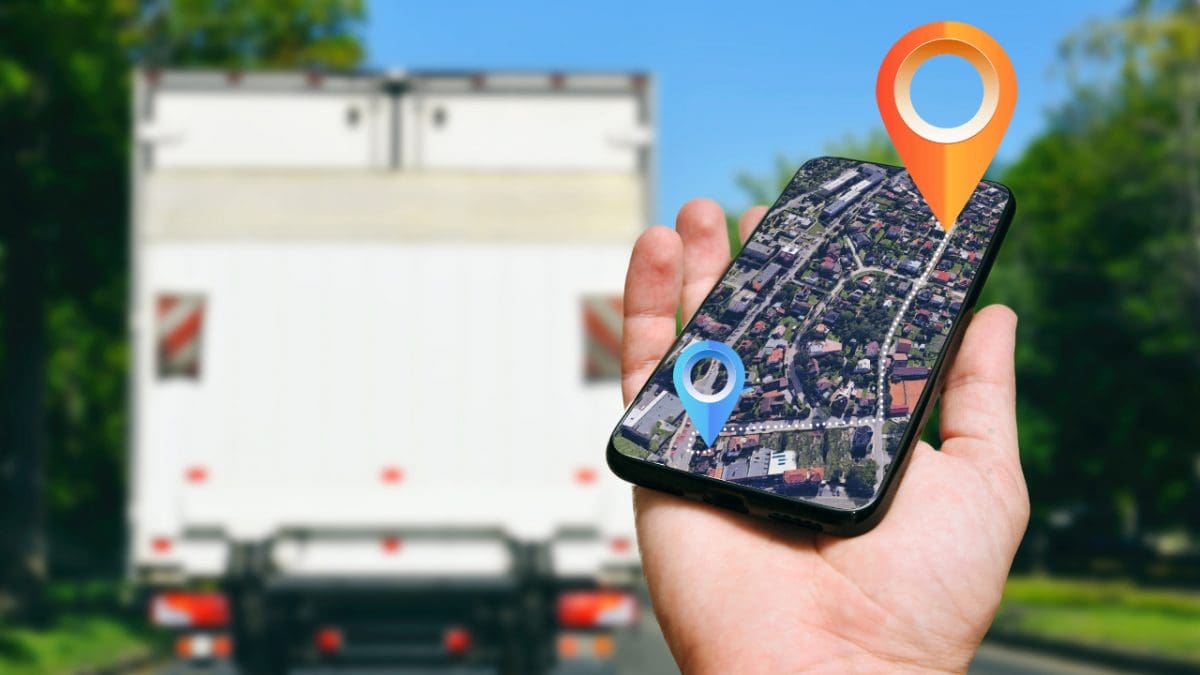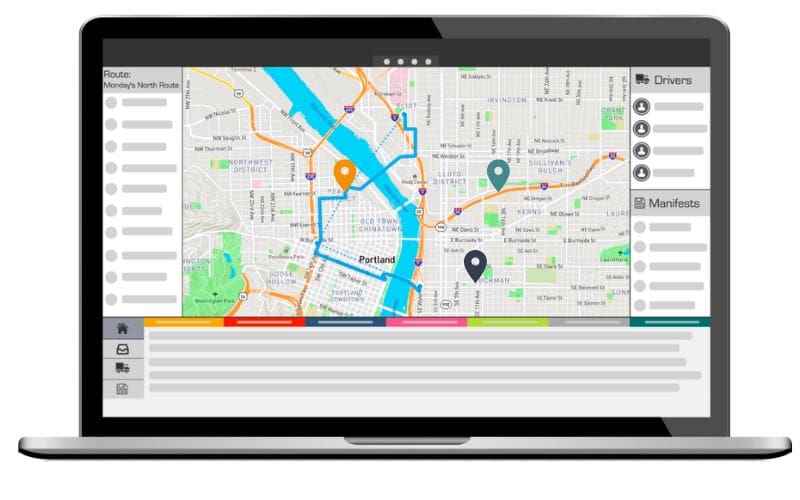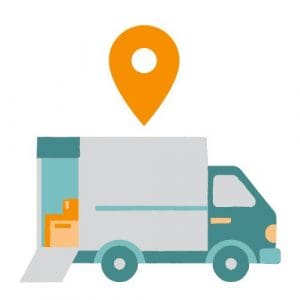
In a world of online orders and deliveries, customers now frequently track their packages from the moment the order is entered to the moment it arrives on their doorstep or loading dock. Each brand will develop a way to communicate this process in order to keep their customers informed. Stages of delivery may include: Processing, Packaging, Shipping, En Route, and Arriving. But what, exactly does each phase mean?
For most customers, the phase that matters most is when a package transitions from preliminary states to en route. This indicates that their package is not just being handled; it is on the way and can be expected soon. However, many brands use the term ‘en route’ to mean several different things indicating a wide range of expectations or timelines regarding package delivery.
Today we’re focusing on the meaning of En Route and what your customers want to see when you reach this point in the delivery stage.
Defining En Route

En route is a broad term that encompasses a large part of the last-mile delivery process. Some companies use it to mean that a customer’s vehicle is on the final leg of the journey and around the corner, while others show the ‘en route’ indicator simply when a package has entered their city. En route could mean that a package is about to arrive or it may pass through several more carriers and checkpoints before arrival.
Customers typically assume that en route relates to last-mile delivery, in the hands of the last carrier and on its way to their door. Companies typically see en route as meaning that the package is exactly that – being routed. It is important to balance the meaning of ‘en route’ when used by a company to best manage the expectations of the customer.
Other Terms for En Route
Of course, not all brands use the same terminology. Some use a more colloquial way to say that a package is in the last-mile stage of delivery.
For example ‘On the Way’ and ‘Out for Delivery’ are often used to indicate that a package is in the neighborhood and may arrive within the day. Papa John’s uses ‘Delivering’ to indicate that a pizza has left the restaurant and is on the road. Some brands separate ‘shipping’ (long distances) from ‘en route’ (local packages), however, some use the shipping term all the way to the customer’s door.
What Steps are Really Happening En Route?
One of the major points of deciphering what en route means is determining what it really involves. This critical stage of the delivery process defines when your customers begin to anticipate the package’s arrival. But whether that begins days, hours, or minutes before delivery depends on the brand and the company’s last-mile process.
Some packages start at the ‘en route’ phase as soon as they leave headquarters while others transition to ‘en route’ as they come closer to the customer. When a package is ‘en route’, this generally means that its final destination is the customer’s home and that the package is now traveling on delivery trucks with a chance of completing delivery within the current ‘route’ on which the truck travels.
When Does ‘En Route’ Start, and Where Does It End?
Where does it start, and where does it end? ‘En route’, in essence, means that there is a truck that is routed toward your customer. However, the practical meaning of ‘en route’ can change depending on where the customer lives and where the package was ordered from. The route itself might stop through multiple mailing facilities across the nation or it might encompass only the last truck route in the customer’s neighborhood.
- Where En Route Starts
- En route starts when the package is loaded onto a truck that is headed toward the customer, either directly or indirectly.
- The further away the warehouse is from the customer, the more likely a company will differentiate between ‘shipping’ and ‘en route’, where ‘en route means that the package has at least transferred to local carriers in the customer’s home city and shipping indicates transport in a long-haul trailer or even air flight.
- Nearby companies are more likely to indicate a product is en route immediately after it leaves the store or warehouse.
- Distant companies may indicate that en route begins during the last-mile phase of delivery, when a final route is charted.
- However, some companies will use the en route status as soon as a product leaves their warehouse, no matter the distance it will travel.
- The Stop
- En route stops at the customer’s door. This is when the final route has led to a successful delivery. The item has either been left on the customer’s porch or handed directly to someone at the door.
- Some brands transition from ‘en route’ to ‘arriving’ for the last block or two as the truck approaches a customer’s door. This allows customers to prepare to retrieve their package. The ‘arriving’ status transition is more common for deliveries where the customer may want to meet the driver at the door, such as high-value items or hot food.

How to See Where Your Package Really Is
One thing that modern customers crave is real-time updates on the location of their package. They want to know when it was sent, when it was last seen, and get an idea of whether it will arrive on time. In an age of supply chain interruptions and porch pirates, package tracking is more important than ever.
Fortunately, companies have a growing set of tools available to provide real-time tracking and updates so customers can always get a recent snapshot of their package’s location.
Real-Time Tracking & Updates
Real-time tracking allows businesses to keep close tabs on every package and to share those insights with customers. It also allows customers to keep a close eye on where their package is heading and how long to anticipate its arrival. Here is a little more on the logistics that make real-time tracking possible:
- A Tracking Link is Shared
- When a shipping label is created, a tracking link is shared with the customer. Through this link, they can follow their package’s journey from the point of origin to their front door, one stop at a time.
- For local deliveries, this may simply be an alert that their order is being processed, then loaded, and from which store.
- Packages Scanned at Every Exchange
- As a package makes its journey, it is scanned at every stop or exchange. When it reaches a new city or enters a new truck, a new scan is entered into the system.
- This creates a record of where the package is traveling, how quickly its moving, and where it has been.
- Last Seen Time and Location
- Customers use their tracking link to view updates. Each update contains information from the last scans.
- This allows customers to know that their package is not lost and is traveling in the right direction.
- En Route Updates and GPS Tracking
- Once a package reaches en-route status within the customer’s city limits, updates become more frequent.
- Some last-mile providers include a live GPS location during the final delivery route, or within a few stops of the delivery.
- This provides customers with a map and live updates on how close their delivery is from arrival.
- Photo Finish
- Many delivery services have begun adding the finishing touch: A photo of the package delivered on the porch or tucked out-of-sight in the carport to confirm delivery. This is particularly useful when the customer is not home to receive the package or no-contact delivery has been requested.
Customer Satisfaction
Real-time tracking and updates are crucial for customer satisfaction.

Across the board, customers prefer services that provide real-time tracking of their deliveries and to know when a package is en route compared to the uncertainty of waiting for an estimated arrival window. There are several important reasons for this. Real-time tracking and updates provide customers with the assurance that their package is coming and that it’s been seen recently. From important and costly orders to anticipating the arrival of dinner, customers want to see their package at every stage of the delivery process.
But there are also other elements that play a role in real-time delivery updates and customer satisfaction.
- Availability for the Delivery Window
- Depending on what is being delivered, your customers may want to meet their package at the door. In fact, it might be necessary for the package to be handed off to a resident (or business employee) rather than left unattended on the porch. Real-time tracking can tell customers when their package is en route and when to expect their package and when to make themselves available.
- For customers who aren’t home when the package arrives, real-time tracking can tell them to expect a package on their porch when they return. Especially if there is a photo of the delivered package.
- Early and On-Time Arrival
- Real-time tracking and updates provide customers with the assurance that their package will arrive on time. In fact, customers can even be impressed by the rapid transport of their delivery over short times and long distances when they see that only a few hours pass between scans that are many miles and cities apart.
- Expectation Management for Delays
- Of course, en route tracking also helps customers manage their expectations without worrying about lost packages when there are delays. If bad weather, traffic, or other setbacks occur, timely and regular updates can help customers to wait patiently and be understanding of delays.
- Worry-Free Anticipation
- Finally, real-time tracking allows customers to anticipate their package with positivity. If they are eager for their order to arrive, customers can check the tracking and rest assured that their package is still on its way, counting down the days or hours to its arrival, once en route, while confident that their enthusiasm will be rewarded.
How Real-Time Tracking and Updates Can Create a Competitive Edge
Over 88% of retailers offer some form of package tracking, but only 43% offer real-time tracking updates. This creates an opportunity. With 69% consumers seeking to track their packages, the remaining competitors who do not yet have real-time tracking are falling behind. Even within the group that has tracking, the quality of that tracking makes a difference.
Customers prefer package tracking with more frequent updates, and far prefer tracking that offers a live map for their en route last-mile delivery experience. If your competitors are not yet offering granule and rapid package tracking updates, this is your opportunity to gain the competitive edge with a more complete and satisfying customer experience from every order.
Brand Successfully Providing Tracking and Updates
- Doordash
- Doordash and other tracking apps offer a combination of stage-based tracking and a live map following the delivery driver’s en route vehicle.
- Home Depot
- Whether ordering from a nearby store or shipping form a distant warehouse, Home Depot offers a three-point delivery update interface
- eBay
- eBay uses imported carrier data to provide a four-point delivery tracking and more specific scan-by-scan order tracking and updates. It also uses “out for delivery” instead of ‘en route’ in tracking terminology.
- Walmart
- Similar to Home Depot, Walmart will ship you orders from a local store or any warehouse in the country. They offer a four-part update system including “order placed”, “processing”, “shipped” and “delivered”.
How to Add Real-Time Tracking to Your Delivery Services

If you manage a brand that ships either locally, nationally, or across the globe, order tracking and updates are essential. They provide transparency and positive feedback to your customers, whether they are waiting a few hours or even a few weeks for their shipment. From the moment you receive their order until their package is ‘en route’ to their front door, real-time tracking and updates will serve as a connection between customers and their packages.
You can add real-time tracking to your delivery service by integrating a platform that transforms your own internal tracking process into a welcoming customer dashboard. You are likely already scanning packages at each depot and exchange point and alerting your team as packages transition from one stage of delivery to the next. If not, then you are working with a carrier like UPS or USPS who take care of these stages of delivery for you. All you need is a platform like Elite EXTRA Routing & Dispatch to provide customers with a dashboard that gives them insight on your progress.
Let Your Customers Know When Their Deliveries are En Route
Whether you’re already tracking your packages or plan to start doing so soon, get an edge on the competition by adding real-time updates to let your customers know where their package is when en route. With Elite EXTRA Routing & Dispatch, you can hone your last-mile performance while impressing your clients.
Learn how you can add real-time tracking and updates to your deliveries with Elite EXTRA’s last mile delivery software.
Sources
https://www.insiderintelligence.com
https://startupsmagazine.co.uk/article-importance-shipment-tracking-customer-experience
https://www.linkedin.com/pulse/4-ways-real-time-delivery-tracking-makes-difference-your-mark-taylor







